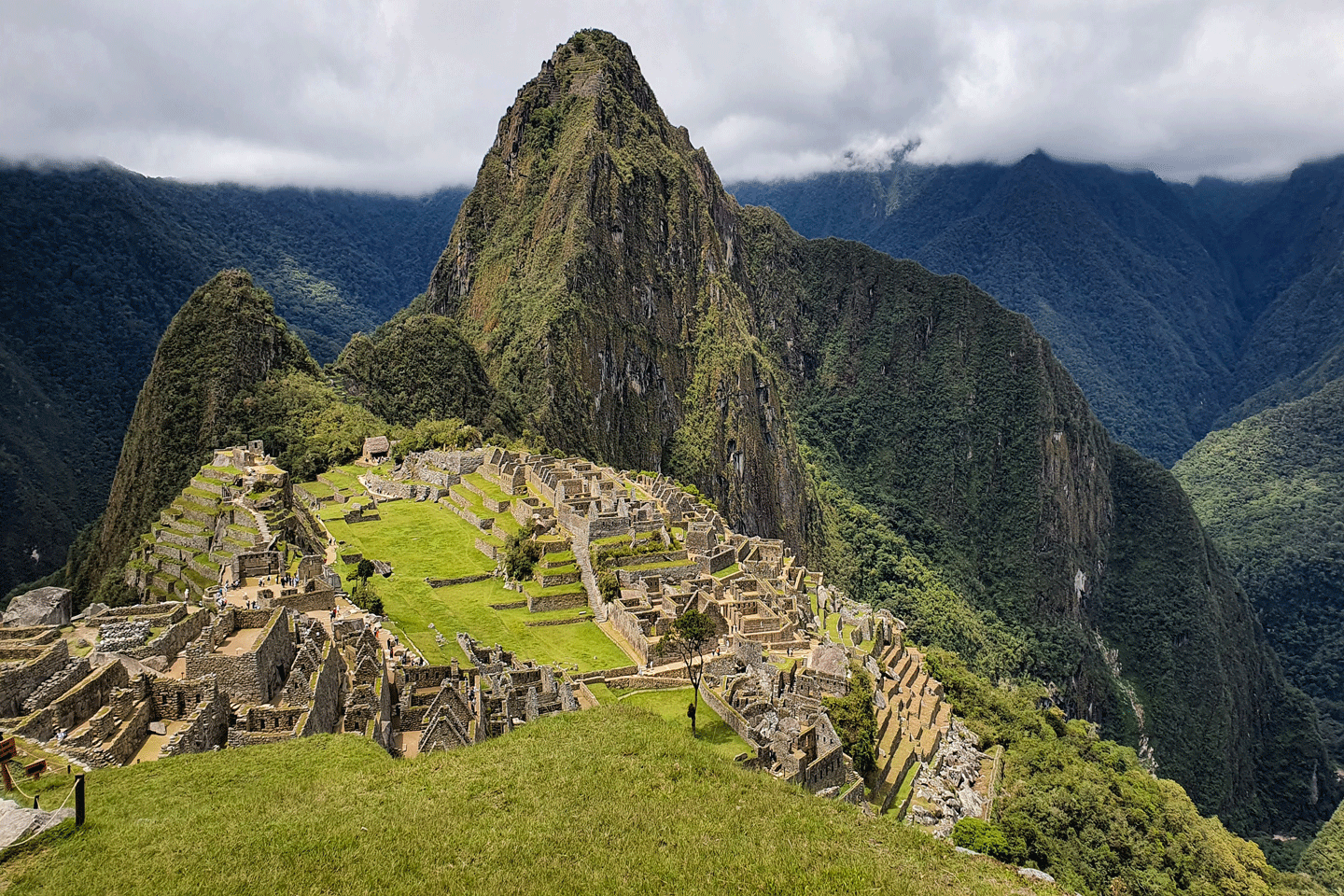Nestled high in the Andes Mountains of Peru, Machu Picchu is one of the world’s most iconic archaeological sites and a bucket-list destination for travelers seeking adventure, history, and breathtaking landscapes. This ancient citadel, often referred to as the “Lost City of the Incas,” continues to captivate visitors with its mysterious origins, stunning architecture, and dramatic mountain backdrop. Whether you’re planning your first trip or simply dreaming of this UNESCO World Heritage Site, here’s everything you need to know about Machu Picchu.
The History of Machu Picchu
Machu Picchu was built in the 15th century during the height of the Inca Empire, under the rule of Emperor Pachacuti. Despite its grandeur, the citadel was abandoned just over 100 years later, likely due to the Spanish conquest. Interestingly, the Spanish never discovered Machu Picchu, which allowed it to remain hidden from the outside world for centuries.
It wasn’t until 1911 that American historian Hiram Bingham brought Machu Picchu to global attention. While the exact purpose of the site remains debated, it’s widely believed to have served as a royal estate, a religious sanctuary, or an astronomical observatory. The precision of its stone construction, which has withstood earthquakes and centuries of weathering, is a testament to the Inca’s advanced engineering skills.

Ancient Life in Machu Picchu: A Glimpse into the Daily Lives of the Inca
Machu Picchu, the iconic Inca citadel perched high in the Andes, is not only a marvel of ancient engineering but also a window into the daily lives of the people who once called it home. While the site is often celebrated for its breathtaking architecture and stunning location, the stories of the individuals who lived, worked, and worshipped there are equally fascinating. From the diverse backgrounds of its inhabitants to their agricultural ingenuity and spiritual practices, Machu Picchu offers a rich tapestry of ancient life waiting to be explored.
Daily Life in Machu Picchu: A Bustling Royal Estate
Machu Picchu was primarily a royal estate for Emperor Pachacuti, serving as a retreat for the Inca elite. At its peak, it is estimated that around 750 people lived within its walls. The majority of these residents were yanaconas (servants) who provided support for the estate’s daily operations. These individuals lived there permanently, ensuring the smooth functioning of the citadel.
In addition to the servants, Machu Picchu was home to religious specialists and temporary workers (mayocs) who were likely brought in for specific projects or ceremonies. During the harsher seasons, the population dwindled to a few hundred, with only essential staff remaining to maintain the site.
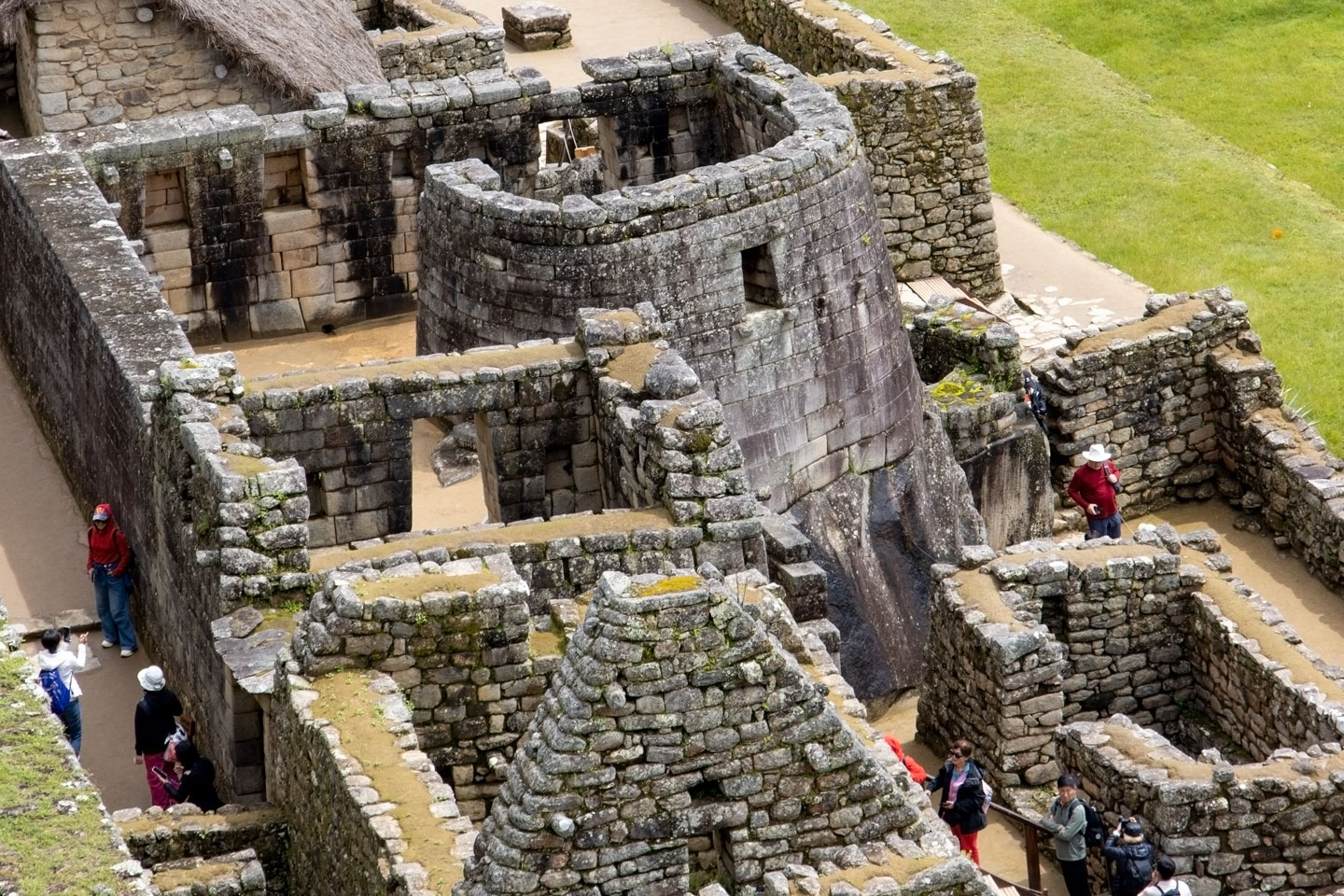
A Melting Pot of Cultures: The Diverse Inhabitants of Machu Picchu
One of the most intriguing aspects of Machu Picchu is the diversity of its inhabitants. Studies of skeletal remains reveal that many of the people who lived there were not native to the region. Chemical and osteological analyses indicate that these individuals came from various parts of the Inca Empire, including coastal areas and highland regions.
Evidence of water parasites and dietary patterns further supports this theory. The remains show that many residents had diets rich in maize, potatoes, grains, and legumes, with less reliance on fish—a shift from their coastal origins. This suggests that these individuals migrated to Machu Picchu, adapting to the agricultural practices of the highlands.
Interestingly, the skeletal remains also reveal lower levels of arthritis and bone fractures compared to other Inca sites. This indicates that the residents of Machu Picchu were not engaged in heavy physical labor, unlike those who worked in the Mit’a labor system or served in the military.
Animals in Machu Picchu: Companions and Resources
Animals played a significant role in the daily life of Machu Picchu. Archaeologists have uncovered bones of llamas, alpacas, and guinea pigs at the site. Llamas and alpacas, which are native to higher altitudes, were likely brought to Machu Picchu from the Puna region for their meat and pelts. Guinea pigs, on the other hand, were used for both food and ritual purposes, often buried in tombs as offerings to the gods.
Six dog remains were also discovered, positioned near human burials. This suggests that dogs were cherished companions, possibly accompanying their owners into the afterlife.
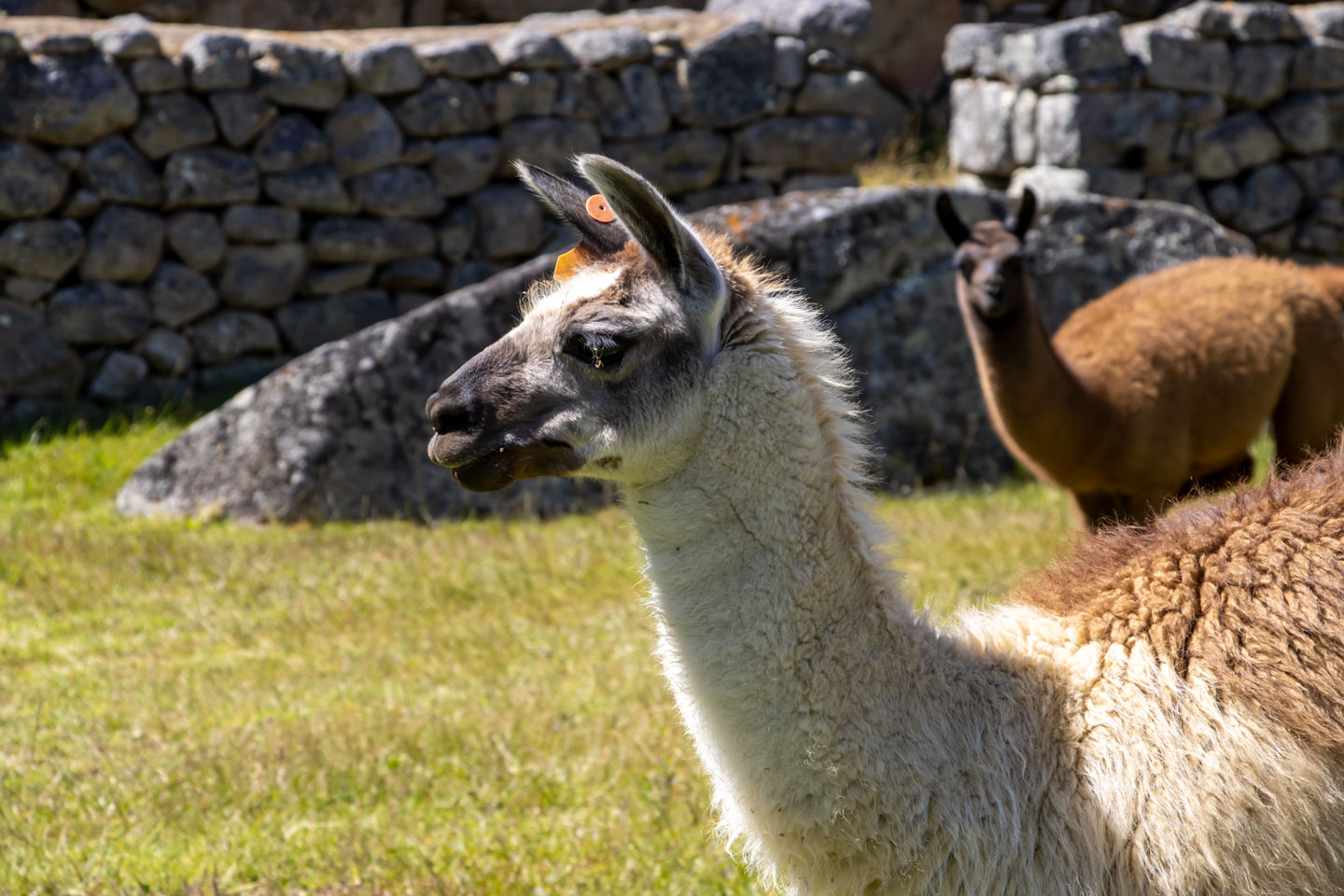
Agricultural Ingenuity: The Terraces of Machu Picchu
Agriculture was the lifeblood of Machu Picchu, and the Inca’s mastery of farming in challenging terrain is evident in the hundreds of andenes (terraces) that cascade down the mountainside. These terraces were not only used for growing crops but also served as a means of preventing erosion and landslides.
The terraces were engineered with remarkable precision. Built in layers, they featured a base of large stones, followed by gravel, sand, and rich topsoil transported from the valley floor. This design allowed for efficient drainage, crucial in an area that receives over 1,800 mm (71 inches) of rain annually.
Despite their sophistication, the terraces alone could not sustain the entire population. Studies suggest that much of the food consumed at Machu Picchu was imported from surrounding valleys, highlighting the site’s reliance on trade and external resources.
Spiritual Practices: Human Sacrifice and Mysticism
While Machu Picchu is not known for large-scale human sacrifices, there is evidence of ritualistic practices. Retainers were sometimes sacrificed to accompany nobles in the afterlife, though many of these remains were not given proper burials and have been lost to time.
Animal sacrifices, particularly of guinea pigs, were more common and were often made at the Altar of the Condor, a sacred site within the citadel. Liquid and dirt offerings were also part of the spiritual rituals, reflecting the Inca’s deep connection to nature and their gods. These traditions continue to be honored by members of the New Age Andean religion, keeping the spiritual legacy of Machu Picchu alive.
Why Machu Picchu’s Ancient Life Matters
The daily life of Machu Picchu’s inhabitants reveals a complex and vibrant society that thrived in one of the world’s most challenging environments. From the diverse origins of its people to their innovative agricultural techniques and spiritual practices, the citadel offers a unique glimpse into the Inca Empire’s cultural and social fabric.
For modern travelers, understanding the ancient life of Machu Picchu adds depth to the experience of visiting this awe-inspiring site. It transforms the ruins from mere stone structures into a living testament to the resilience, ingenuity, and spirituality of the Inca people.
Location: Where is Machu Picchu?
Machu Picchu is located in the Cusco Region of Peru, approximately 50 miles (80 kilometers) northwest of Cusco, the former capital of the Inca Empire. Perched at an elevation of 7,970 feet (2,430 meters) above sea level, the citadel sits on a mountain ridge between the peaks of Machu Picchu and Huayna Picchu. The site overlooks the Urubamba River valley, surrounded by lush cloud forests and dramatic Andean peaks.
The journey to Machu Picchu is an adventure in itself. Most travelers begin in Cusco, taking a scenic train ride to Aguas Calientes (Machu Picchu Pueblo), followed by a bus ride or hike up to the citadel. For the more adventurous, the Inca Trail offers a multi-day trek through stunning landscapes, culminating in a sunrise arrival at Machu Picchu.
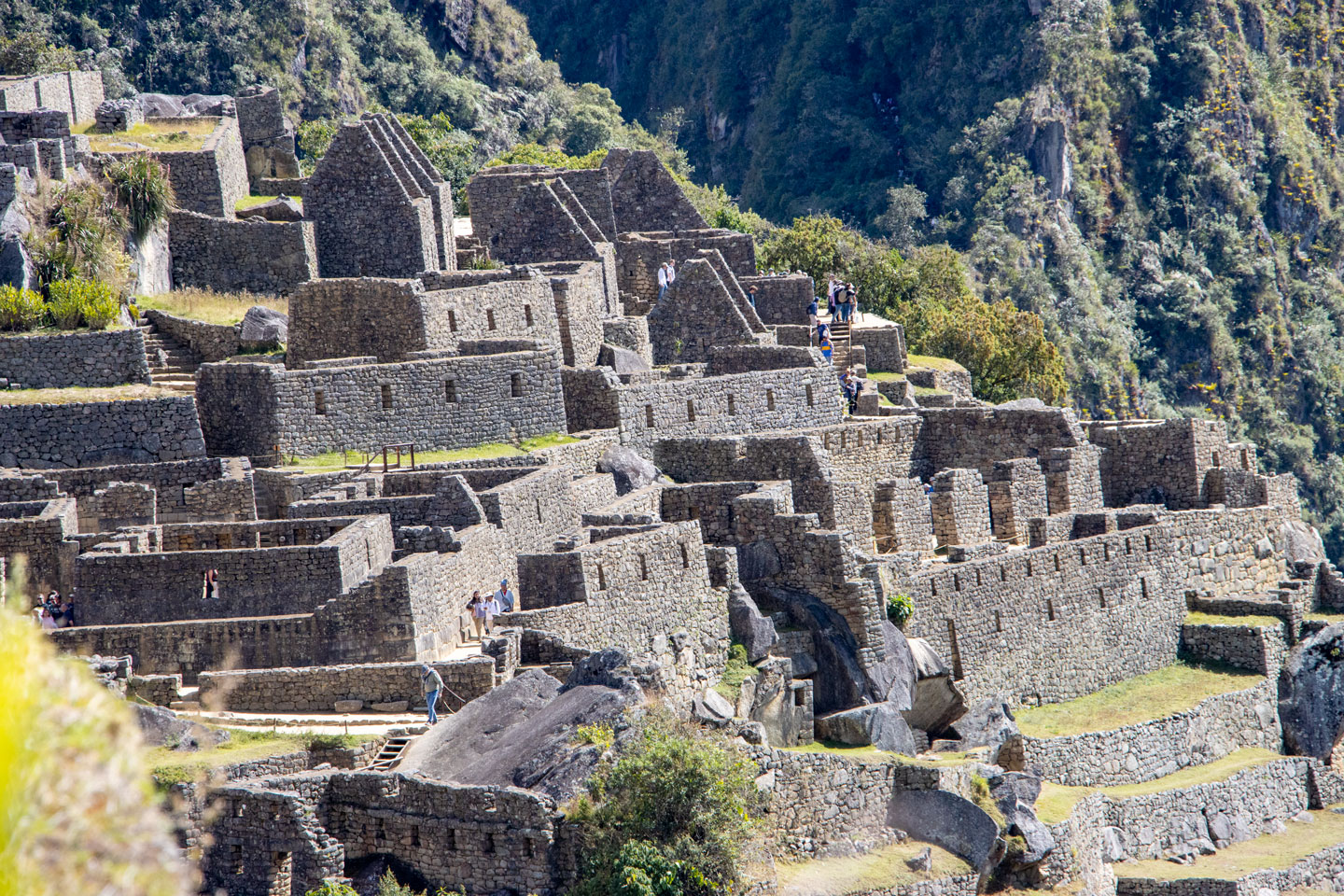
The Mountains of Machu Picchu: A Sacred Landscape
The citadel is flanked by two iconic mountains: Machu Picchu Mountain and Huayna Picchu. Both peaks offer hiking opportunities with panoramic views of the ruins and surrounding valleys.
Huayna Picchu: Known as the “Young Peak,” this steep mountain towers over the citadel and is home to the Temple of the Moon. The hike to its summit is challenging but rewards visitors with unparalleled views. Only 400 visitors are allowed per day, so booking in advance is essential.
Machu Picchu Mountain: The “Old Peak” is taller than Huayna Picchu and offers a less crowded but equally stunning vantage point. The hike is longer and more gradual, making it a great option for those seeking a quieter experience.
The Incas revered mountains as sacred entities, or apus, and the positioning of Machu Picchu between these peaks reflects their deep connection to nature and spirituality.
Exploring Machu Picchu’s Key Sites: A Journey Through Inca Architecture and Mysticism
Machu Picchu is not just a single archaeological site but a complex network of temples, terraces, and structures that reveal the ingenuity and spirituality of the Inca civilization. Each site within the citadel tells a unique story, from astronomical precision to royal ceremonies. Here’s a detailed guide to the most fascinating sites of interest at Machu Picchu, offering travelers a deeper understanding of this ancient wonder.
Temple of the Sun (Torreón): The Inca’s Astronomical Marvel
The Temple of the Sun, also known as the Torreón, is one of Machu Picchu’s most iconic structures. This semicircular temple is built atop a natural rock formation, which Hiram Bingham referred to as the “Royal Mausoleum.” The temple’s design mirrors other Inca solar temples found in Cusco and Pisac, featuring a parabolic enclosure wall made of finely crafted ashlar stones.
Inside the temple lies a 1.2 by 2.7-meter rock platform, smooth except for a small raised area in its southwest quadrant. The temple is renowned for its two trapezoidal windows:
The Solstice Window: Facing 65°, this window aligns with the June solstice sunrise, marking the longest day of the year.
The Qullqa Window: Facing 132°, this window frames the Inca constellation Qullca (the storehouse) during the June solstice sunset, alongside other celestial bodies like the Pleiades and Canopus.
The Temple of the Sun also features a “Serpent’s Door,” which opens to a series of 16 ceremonial pools and offers a stunning view of Huayna Picchu. This temple was likely used for astronomical observations and religious ceremonies, highlighting the Inca’s deep connection to the cosmos.
Intihuatana Stone: The Hitching Post of the Sun
The Intihuatana stone is one of Machu Picchu’s most enigmatic features. Often referred to as the “Hitching Post of the Sun,” this ritual stone was used by the Inca to track the sun’s movement throughout the year. Its name comes from the Quechua words inti (sun) and wata (to tie), reflecting its believed purpose of “tying” the sun to the earth during the winter solstice.
The stone is precisely positioned at 13°9’48” S, allowing it to cast no shadow at midday on November 11 and January 30. During the June solstice, it casts its longest shadow to the south, while the December solstice produces a shorter shadow to the north. This precision underscores the Inca’s advanced understanding of astronomy and their ability to integrate it into their architecture.
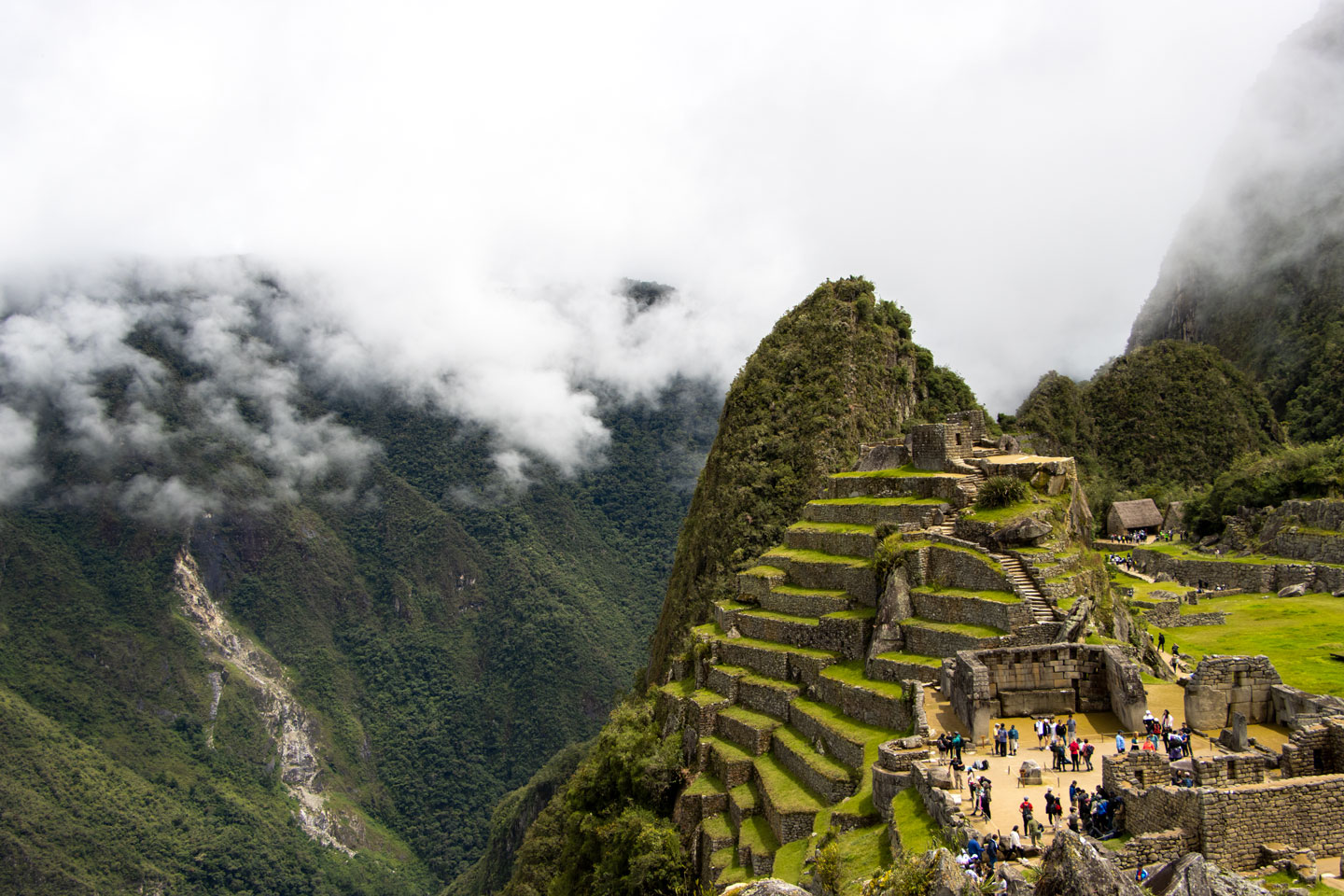
Inti Mach’ay: The Royal Cave of the Sun
Inti Mach’ay, a sacred cave located on the eastern side of Machu Picchu, played a central role in the Inca’s Royal Feast of the Sun (Qhapaq Raymi). This month-long festival culminated on the December solstice, during which noble boys underwent an ear-piercing initiation ritual to mark their transition into manhood.
The cave’s unique architecture includes a tunnel-like window designed to allow sunlight to enter only during the days surrounding the December solstice. This feature, combined with its finely crafted masonry, makes Inti Mach’ay one of the most architecturally significant structures at Machu Picchu. While many surrounding caves were used as tombs, there is no evidence that Inti Mach’ay served a funerary purpose.
The Dispute Over Inca Artifacts: A Cultural Reckoning
Machu Picchu’s history is not without controversy. During his expeditions in 1912, 1914, and 1915, Hiram Bingham removed thousands of artifacts, including ceramic vessels, silver statues, jewelry, and human bones, and took them to Yale University for study. While Bingham claimed the artifacts would be returned to Peru after 18 months, Yale retained them for nearly a century, sparking a prolonged dispute.
In 2010, after years of negotiations, Yale agreed to return the artifacts to Peru. The final batch was delivered in 2012, and the pieces are now permanently displayed at the Museo Machu Picchu (La Casa Concha) in Cusco. This museum not only showcases the artifacts but also serves as a research center for scholars and students, ensuring the preservation and study of Inca heritage.
Inca Engineering: Mastery of Stone and Terrain
Machu Picchu’s construction is a testament to the Inca’s unparalleled engineering skills. The central buildings feature polished dry-stone walls built using the ashlar technique, where stones are cut to fit together perfectly without mortar. This method not only created durable structures but also allowed them to withstand seismic activity.
The site’s location on fault lines provided natural drainage and access to fractured stone, which the Inca used for construction. Terraces layered with stone chips, sand, and topsoil prevented erosion and landslides, while canals and reservoirs ensured a steady water supply for irrigation and daily use.
The transportation of massive stones remains a mystery, though it likely involved hundreds of workers using ramps, rollers, and ropes. Some stones feature knobs that may have been used to lever them into place, showcasing the Inca’s ingenuity in solving logistical challenges.
How to Reach Machu Picchu: A Modern Journey to an Ancient Wonder
Today, travelers can reach Machu Picchu via several routes:
By Train: A scenic journey from Cusco or Ollantaytambo to Aguas Calientes, followed by a bus ride or hike to the citadel.
The Inca Trail: A historic 42-kilometer trek through the Andes, passing archaeological sites and culminating at the Sun Gate (Intipunku).
The Hydroelectric Route: A more affordable option involving a road trip to the Hydroelectric Station, followed by a walk or short train ride to Aguas Calientes.
By 2025, a new paved road will reduce travel time to Machu Picchu, making the site more accessible while raising concerns about preserving its integrity.
Why These Sites Matter
Machu Picchu’s temples, terraces, and artifacts are more than just remnants of an ancient civilization—they are windows into the Inca’s worldview, blending science, spirituality, and artistry. For travelers, exploring these sites offers a chance to connect with the past and marvel at the ingenuity of a culture that thrived in harmony with its environment.
Tips for Visiting Machu Picchu
Book Early: Machu Picchu has a daily visitor limit, and tickets for Huayna Picchu and Machu Picchu Mountain sell out quickly. Reserve your spot months in advance.
Acclimatize: Due to the high altitude, spend a few days in Cusco or the Sacred Valley before visiting to avoid altitude sickness.
Visit Early or Late: Arrive at sunrise or stay until sunset to avoid crowds and experience the citadel in its most magical light.
Hire a Guide: A knowledgeable guide can bring the history and significance of Machu Picchu to life, enhancing your experience.
Why Machu Picchu is a Must-Visit Destination
Machu Picchu is more than just an archaeological site; it’s a place where history, nature, and spirituality converge. Whether you’re marveling at the precision of Inca stonework, hiking to panoramic viewpoints, or simply soaking in the awe-inspiring scenery, Machu Picchu offers a once-in-a-lifetime experience.
For travelers seeking unique and unforgettable adventures, Machu Picchu stands as a testament to human ingenuity and the enduring beauty of the natural world. Start planning your journey today and uncover the secrets of this ancient citadel for yourself.

